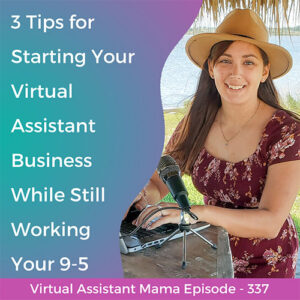
Episode 337: 3 Tips for Starting Your Virtual Assistant Business While Still Working Your 9-5
In this episode of the Virtual Assistant Mama podcast, I’m sharing 3 tips to help you start your Virtual Assistant business while still working your 9-5.
In today’s quick tip Thursday episode of the Ditch the Classroom podcast, I’m answering the question “What free tools can I use to help me in my Virtual Assistant business?”
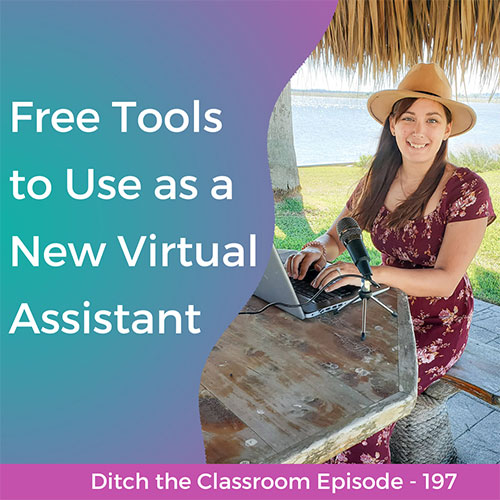

Grab your Ditch the Classroom Toolkit for only $47!
Sign up for the free Virtual Assistant Workshop, the Ditch the Classroom Toolkit, or Teacher Turned Freelancer Academy.
Have any questions for me? Feel free to send me an email at arianna@ariannavernier.com or on Instagram @arianna.vernier! I love chatting with y’all and helping you hit the ground running. Are you ready? Let’s go.
Love,
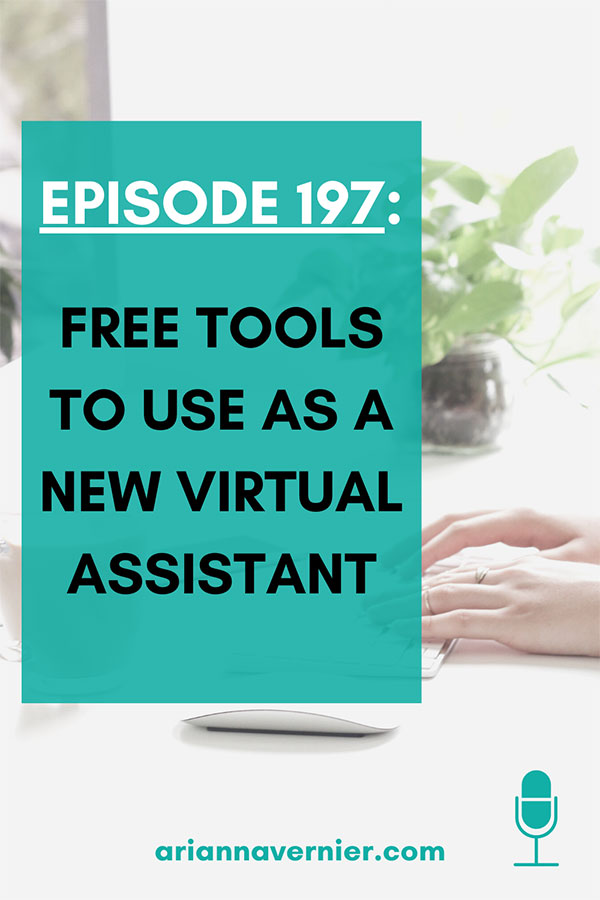
Full Episode Transcription:
(00:07):
Hey, hey friends. I had somebody recently ask what free tools they can use to help them in their new virtual assistant business, and I just thought that’d be a really good question to turn into a quick tip Thursday podcast episode because when you’re starting your freelance and virtual assistant business, you really wanna save as much money and time as possible while still looking professional. I know that a lot of women that I work with in the Teacher Turned Virtual Assistant program, they’re starting this as more of a side hustle while they’re still teaching.
(01:45):
So they don’t wanna have to invest too much, but at the same time, they wanna come across as a professional legitimate business. So in today’s episode, I’m gonna give you seven free tools to help you look professional for new virtual assistant clients and make your virtual assistant business a little bit easier while saving you time. So let’s just jump right in.
(02:07):
Number one, this is pretty basic, but still very important. You need a professional email. Please don’t use the email you created when you were 13. I know when I was 13, my email domain was girlygirl_13. Please don’t use something like that. The best option to create a professional email is just one with your first and last name at gmail.com. Gmail’s a really good platform. It looks a little more professional than some of the other ones, and it’s a really good one to go with. So all you have to do is create a free email with them, keep it simple, and then that way you can also keep it separate from any of your other emails you’re getting and you can keep your client, your potential client emails separate from everything else so you don’t accidentally overlook something.
(02:54):
The second tool I have for you is Calendly. Now, when you’re talking to potential clients, they’re gonna wanna schedule a call with you and typically we call that call the discovery call or the interview call. And on this call they’re gonna wanna chat with you to see what services you can offer and how you can help them. They need to be able to send them your calendar with specific times that you’re available for this call. That way you’re not doing like a bunch of back and forth trying to figure out a time via email. So Calendly, that’s C-A-L-E-N-D-L-Y. You can go in there and you can set specific days and times that you’re available, and that way you can make sure it’s not gonna clash with anything else you have going on in your life. You can also connect it to your Google calendar. So if you put an event in your Google calendar, it’ll sync with Calendly. So even if that time is open on Calendly, it’ll now be blocked because it’s synced with your Google Calendar. You can also have a little form with questions that people have to fill out before they book a call. So before they can submit for the specific time they choose, they have to answer the questions in your form. That way you can learn a little bit more about their business and come prepared to the call to talk with them. So you can ask different questions like what’s your website? If they have one. What are your social media links? Who’s your ideal client? What’s your budget? Things like that. That way you can do a little bit of homework prior to the call and you have things ready when you do actually have the call.
(04:23):
I do recommend for Discovery Calls that you do face-to-face, not over the phone. A lot of people do the phone, but you wanna set yourself apart and you wanna build that connection with them. Best way to do that is to do it face-to-face. So that brings me into tool number three, which is Zoom. I know a lot of, you’re probably pretty familiar with Zoom, but it’s a meeting software where you can chat face-to-face with a potential client, ask them questions they can learn about you and the services you offer and how you can help them. So all you do is just send them a free Zoom link before the meeting. Make sure when you’re setting it up that you do just the waiting room. You don’t wanna have them have to put it in a passcode cuz that’s just complicated. Just do the waiting room. This is a really good way to make yourself stand out among other people applying for the position.
(05:13):
Okay, so you’ve done the Discovery Call with them, they loved you, they’re ready to sign on, they’re ready to hire you. You need to get a contract signed by them. So a really great tool for this is called HelloSign, which is all one word, hello, S-I-G-N. With HelloSign. You can upload your contract to it and then you can add signature boxes in the specific spots that it has. Then you just have to send that contract to your potential client to sign. You get three contracts for free per month. So this is a really good place for you to start out with a free tool that will cover your business legally. So, HelloSign, that was number four.
(05:53):
Now, in order to actually get paid, you need a platform to do that. So tool number five is Stripe. I highly, highly recommend Stripe. They do take a little bit of a percentage from your sales, but not as much as others. And that’s just a part of doing business. You guys, you’re not gonna get any payment platform that does not take a very small percentage. I think it’s like 2.5%. This is just something that you factor into your business expenses and then right off on taxes at the end of the year. But I do like Stripe better than PayPal. PayPal sometimes if a potential client were to dispute a charge, they tend to go in favor of the purchaser and they won’t back you as much. They won’t ask you for proof, they just tend to go in favor of the purchaser before asking for evidence. So that can sometimes really cause issues for you and your business, especially if you did the work and then the client tries to say you didn’t. You don’t want PayPal going in favor of them without being able to show proof that you did in fact do the work. So I like Stripe because they’re just a little better about that. If any issues are to arise, they’ll gather evidence from you before they make a decision. So you can set up a free account with them, connect it to your bank account, and that’s how you get paid.
(07:09):
Tool number six, if you are working hourly for your clients, then I highly recommend using Toggl to keep track of the hours that you’re working. This is spelled T-O-G-G-L, and it’s just basically a stopwatch where you can track your time when you’re working on specific projects. You can put a note in there of what you did during that time. You can assign the time to specific clients and you can also export your time sheet and send it to your clients so that they can see where their time was spent. So again, that’s Toggle, T-O-G-G-L.
(07:41):
Okay, free tool number seven. One of my absolute favorite tools, especially if you’re doing any kind of social media management or things where you need to create graphics, I highly, highly recommend Canva. That’s C-A-N-V-A. Canva has so many different templates for you to create. Pinterest pins, Instagram graphics, website covers, PDFs for freebies that your clients want to create, all kinds of different things. I don’t recommend creating logos on there because they actually have specific rules that you’re not supposed to create a logo on there. But anything for social media or PDFs, anything like that, Canva is a great resource. They have already created templates for you, so you can literally just plug-in colors, content and photos, and then you’re ready to go. You can also create from scratch if you want, and they do have a pro version, which is super cool, which is also not that much money. It’s only like $13 a month. So if you are in more of the graphic design services, you may want that version, but the free is already amazing. So if you need some graphic design, you know, abilities, but you don’t really wanna get Photoshop, Canva is definitely the way to go. So you wanna make sure that you are setting all of these up, preferably before you start landing clients and before you start chatting with them. That way you have all of your backend systems set up and you’re ready to rot. So let me just recap these for you.
(09:05):
Number one is your professional email, just your first and last name at gmail.com. Number two is Calendly, so people can book calls with you and answer questions before the call. Zoom is number three. That way they can chat with you face-to-face and you can stand out and build that connection with them. Number four is HelloSign. So you can send contracts to your future clients and make sure your business is legally protected. Number five is Stripe so you can get paid cause that’s why we’re doing this. Number six is Toggl, T-O-G-G-L, So you can track your time and show your clients what you’re spending your different time on. Number seven is Canva free design program. So you can create all the social media, graphics, PDFs, everything your client needs. Okay, I hope this was helpful for y’all. Let me know if you have any questions about these specific programs. You can come and drop them in our free Facebook group that’s at facebook.com/groups/ditchtheclassroom. And I just hope this was helpful. I am just so incredibly grateful for each and every one of you who listens to this show. Whether you’re new here or you’ve been here for a while and you listen every episode, I just love you and I wanna support you. So feel free to reach out, do not hesitate, and I hope you have a great rest of your week and I will see you next time.

In this episode of the Virtual Assistant Mama podcast, I’m sharing 3 tips to help you start your Virtual Assistant business while still working your 9-5.
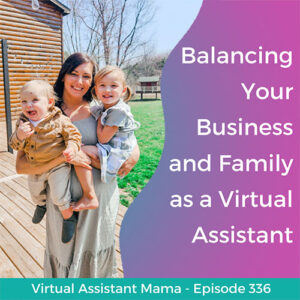
In this episode of the Virtual Assistant Mama podcast, I’m sharing how to balance your business and family life as a Virtual Assistant.
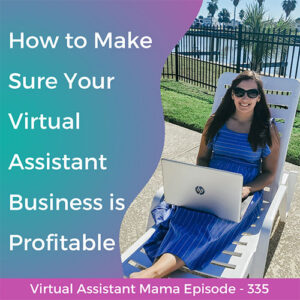
In this episode of the Virtual Assistant Mama podcast, I’m sharing how to make sure your Virtual Assistant business is profitable.